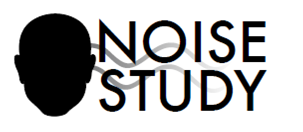NOISE Study Instruments
NOISE study participants complete between 14 and 17 questionnaires annually, providing extensive longitudinal data on exposures to noise, ototoxicants, high-intensity blasts, military service, hearing, tinnitus, physical and mental health, and other important information. Selected NOISE questionnaires are available below.
Noise and Ototoxicant Exposures
Lifetime Exposure to Noise and Solvents Questionnaire (LENS-Q) (Griest et al., 2021)
Developed for the NOISE study, the LENS-Q is the first questionnaire to capture military, non-military occupational, and non-occupational noise and ototoxicant exposure over the course of an individual’s life. This instrument captures detailed and comprehensive data on a wide range of potential hazards to hearing health.
Tinnitus
Tinnitus Screener (Henry et al., 2016)
This 6-item questionnaire, developed for the NOISE study, establishes presence and frequency of tinnitus. The Tinnitus Screener categorizes tinnitus as constant, intermittent, occasional, temporary, or no tinnitus.
Tinnitus and Hearing Survey (THS) (Henry et al., 2015)
>> Link to Tinnitus and Hearing Survey (THS)
This 10-item survey distinguishes problems due to tinnitus from those due to hearing loss or decreased sound tolerance.
* Note: The Tinnitus and Hearing Survey (THS) was developed by employees of the US Federal Government. As such, the THS is not copyrighted and is available for use in the public domain. If used for any purpose, the following publication should be referenced: Henry JA, Zaugg TL, Griest S, Thielman E, Kaelin C, Carlson KF. Tinnitus and Hearing Survey: A screening and assessment tool to differentiate bothersome tinnitus from hearing difficulties. American Journal of Audiology 24(1):66-77, 2015.
Tinnitus Functional Index (TFI) (Meikle et al., 2012)
The TFI is administered to participants who report tinnitus, based on their responses to the Tinnitus Screener. Scores indicate the degree of negative impact of tinnitus experienced and need for intervention.
To request permission to use the Tinnitus Functional Index from the copyright owner, Oregon Health & Science University, please visit: https://apps.ohsu.edu/research/tech-portal/technology/view/1004796
* Note: To learn more about how to interpret TFI outcomes, click here: VIDEO: June 2019 Seminar by Dr. Tara Zaugg: (from a previous NCRAR monthly seminar “Tinnitus Questionnaires Outcomes vs. Patient Report”)
Griest-Hines, S. E., Bramhall, N. F., Reavis, K. M., Theodoroff, S. M., & Henry, J. A. (2021). Development and initial validation of the Lifetime Exposure to Noise and Solvents Questionnaire in US Service members and Veterans. American Journal of Audiology, 1-15.
Henry, J. A., Griest, S., Austin, D., Helt, W., Gordon, J., Thielman, E., Theodoroff, S., Lewis, M. S., Blankenship, C., Zaugg, T., & Carlson, K. (2016). Tinnitus Screener: Results from the first 100 participants in an epidemiology study. American Journal of Audiology 25(2), 153-160.
Henry, J. A., Griest, S., Zaugg, T. L., Thielman, E. T., Kaelin, C., Galvez, G., & Carlson, K. F. (2015). Tinnitus and Hearing Survey: A screening tool to differentiate bothersome tinnitus from hearing difficulties. American Journal of Audiology, 24(1), 66-77.
Meikle MB, Henry JA, Griest SE, et al. (2012). The Tinnitus Functional Index: Development of a new clinical measure for chronic, intrusive tinnitus. Ear and Hearing, 33 (2), 153-176.
